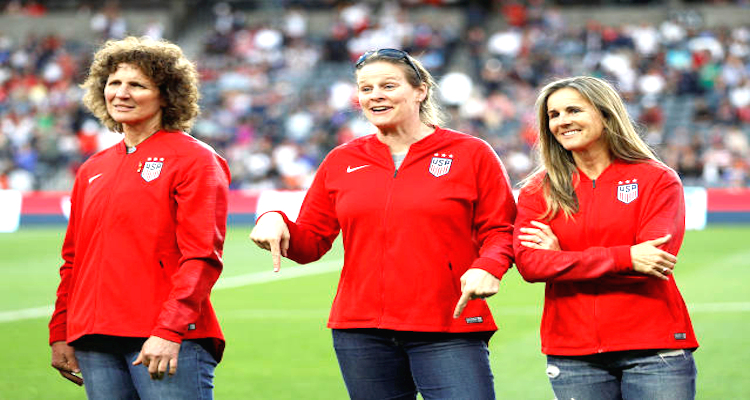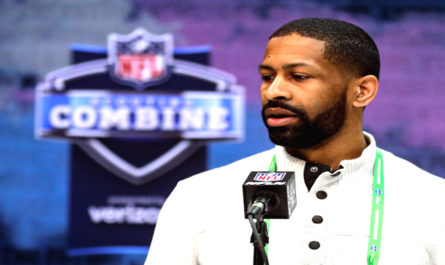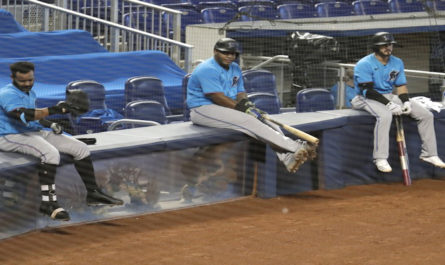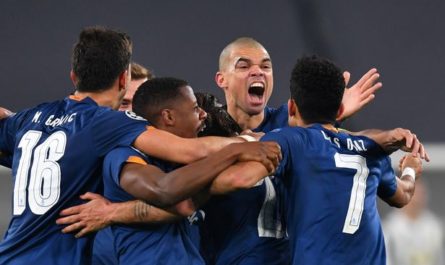Abby Wambach had actually just one identified concussion in her long and laureled profession. It was available in April 2013, 2 months prior to she broke Mia Hamm’s world record for nationwide group objectives for either gender.
Playing versus the Washington Spirit with her Western New York Flash, Wambach took a vicious blow to the head when her own protector cleared the ball and clobbered her colleague from close variety. Wambach crumpled to the ground and balled up, clutching her head. The referee waved off the Flash fitness instructor, declining the medical attention for a gamer who was clearly having a hard time. Wambach got up, and the video game went on. When it ended, Wambach sank to her knees and mumbled incoherently prior to stumbling off the field.
Wambach now remembers sensation like she “was dying.” She had long spaces in her memory after theconcussion She could not keep in mind the minute itself. She strolled into the incorrect locker space after the video game, intensifying her confusion.
“That was really the beginning, for me, of this process of educating myself around head trauma,” Wambach informs YahooSports Up till that point, she believed she had actually stayed away from head injury. Or, a minimum of, absolutely nothing was ever identified. But in the middle of a nationwide wave of increased understanding and awareness of concussions, it altered her method to the video game.
< p type =” text” material =”” I understood that[I] was sort of at the end of my profession,” she remembers.“I wasn’t heading the ball nearly as much, mostly because I just didn’t want to get another concussion. Yes, I still put myself in positions to head the ball. Yes, I still scored goals with my head. But I started to think twice. And before this concussion, I didn’t really think twice. I thought I was invincible, for some reason, which I think is really dangerous.”” data-reactid=”24″ >” I understood that[I] was sort of at the end of my profession,” she remembers.“I wasn’t heading the ball nearly as much, mostly because I just didn’t want to get another concussion. Yes, I still put myself in positions to head the ball. Yes, I still scored goals with my head. But I started to think twice. And before this concussion, I didn’t really think twice. I thought I was invincible, for some reason, which I think is really dangerous.”
Now,Wambach believes a lot about how typically she taped up her ankles prior to playing, without ever stressing over her brain.She was a physically bruising striker who, at 5-foot- 11, overlooked defenses and, incredibly, scored more objectives with her head than her feet.She headed the ball continuously.She was permanently putting her head into the fray– often suffering low-cost shots, too.
The science now reveals that, long-lasting, a series of blowsto the head that aren’t full-on concussions can still jointly quantityto the very same sort of damage.
“I can’t speculate how many micro-concussions or head impacts I took, but I do know that it’s probably in the hundreds of times,”Wambach states.“I think about it now and I’m like, ‘God, that feels like such a stupid thing to have done for so many years.’ But it’s where I made a living.”
When she was young,Wambach constantly figured she ‘d simply handle whatever physical effects her profession left her with later.“Well, now I’m in the later,” she states.And although the40- year-old has no post – signs,“that doesn’t make me any less worried for the future.”
These days, shecoaches her stepdaughters. They’re heading the ball now.
“I’m terrified for them,” Wambach states. “I cringe whenever players go up to head a soccer ball. I cringe at my former, risk-taking self. Because we only have this one brain.”
She’s wistful about all of it. “There is beauty in heading,” Wambach states. “And there is a time and place for heading. For me, it is literally how I made a career for myself. There is a bittersweet-ness to this whole thing. But now in my retirement, I’m really terrified about what could possibly be down the road for me.”
In sports, the gender gap in payment is well recorded. But there also exists a gender gap in concussions– and our understanding of those concussions.
“In sports that women and guys play, like basketball and soccer, you’ll find that the women have 2-3 times the reported incidence of concussion,” statesDr Robert Cantu, among the world’s leading concussion medical professionals and a co-founder of the CTE Center at Boston University and the Concussion LegacyFoundation These numbers are substantiated by evaluated and duplicated research studies, he states.
In May, a research study by the American Academy of Orthopedic Surgeons determined a boost in the variety of head injuries in high school professional athletes, in spite of growing awareness.
Girls’ soccer had a greater percentage of concussions relative to other injuries than the kids, about 30 percent to 25 percent. Meanwhile, the rate of reported concussions in ladies’ soccer grew by 21 percent from the 2010-14 duration to the 2015-17 duration. In truth, ladies’ soccer came 2nd just to football in the variety of concussions– 10.2 concussions for each 10,000 practices and video games for football, to 8.4 for ladies’ soccer. Boys’ soccer, by contrast, had simply 3.5 concussions per 10,000 video games and practices.
“So why do women have more reported concussions than guys?” Cantu asks. “That’s the $64,000 question that we don’t have an answer to. More probably than not, part of the answer is that women’s necks are not as strong as guys’ and therefore their brains are exposed to greater accelerations for a lesser hit because the neck isn’t rigid. That maybe is one answer. Other people have speculated — no definite proof — that as a group, women are more honest in reporting signs and symptoms of concussion.”
Head injuries are a huge danger in soccer, and not simply at the greatest levels. (Joe Petro/Icon Sportswire through Getty Images).
It isn’t simply concussions that lead to CTE, it’s repeated head injury. Soccer is swarming with blows to the head, primarily from heading balls kicked high or difficult, however also from flying elbows, head-to- head crashes, flying goalkeeper fists or some other effect.
In October, the New England Journal of Medicine released a Scottish research study of more than 7,500 previous expert soccer gamers that found 3.5 times greater rates of neurodegenerative illness as the cause of death than in the remainder of the population. Former soccer gamers were 5 times likelier to have actually had Alzheimer’s, 4 times likelier to struggle with Motor Neuron Disease, and two times as most likely to deal with Parkinson’s.
In the video game in which Wambach suffered her concussion, she wasn’t even subbed off. That was 7 years back. But this example keeps taking place, even as awareness spreads. Just last summer season, the Washington Spirit’s Rose Lavelle took a blow to the head from the ball so hard that all of Providence Park in Portland might hear it. But she talked her method back onto the field, although she was clearly still impacted.
USWNT legends devoting brains to science
Michelle Akers, the very first super star of American females’s soccer, does not keep in mind the number of concussions she had, precisely, throughout her two-decade playing profession. She likes to joke that it’s since she had a lot of concussions. But the truth that she does not understand, that no one understands, is main to the issue here. We do not understand enough.
For Akers, there were the identified concussions. Three of them, she believes. She had one in China early in her nationwide group profession, back in the late 1980 s. She had another early in the 1995 WorldCup And she had a 3rd right prior to the 1999 World Cup, which broke her eye socket.
< p class=” canvas-atom canvas-textMb( 1.0 em)Mb( 0)– smMt( 0.8 em)– sm” type=” text” material=”“But we all know more happened,”Akers states.”At the very same time, I understand Ialso had the smaller sized concussions[sub-concussive hits] that are undiagnosable.But enoughto have some impacts now.
Can’t connect whatever into one or numerous occasions, however I’m sure it should have had an impact.”” data-reactid=”70″ >“But we all know more happened,”Akers states.”At the very same time, I understand Ialso had the smaller sized concussions[sub-concussive hits] that are undiagnosable.But enoughto have some impacts now.You can’t connect whatever into one or numerous occasions, however I’m sure it should have had an impact.”
Akers gets migraines so bad that they make it difficultto do anything that day.She’s54 now, and she questions if it may worsen as she ages.She believes it’s possible she has persistent distressing encephalopathy, the incapacitating and degenerative illness that has actually notoriously dropped ratings of previous NFL gamers.
“I’ve had concussions,”Akers states.” I’ve hadconcussion- associated after-effects.And who understands?Because ourresearch remains in the baby phase still on what takes placeto a brain with time with duplicated injuries.That’s one factor to consider.
“I headed the ball a lot. A lot.”
BrandiChastain, well-known for twirling her jersey over her head after transforming the penalty shot that clinched the1999Women’sWorldCup, headed the ball a lot, too.
“I took on the responsibility of the defender that I would be brave and I would compete for air balls and would take care of those things,” she states now.”And I felt truly excellent about it. I enjoyed heading the ball.And there wasn’t any person around stating, ‘Hey, you might not want to do that.’
“Nobody diagnosed concussions back then,” Chastain continues.“It was, ‘You got your bell rung. Shake it off. Get back out there.’ I don’t know if I ever had concussions. I’m sure I did. I can honestly say I don’t recall ever having nausea, forgetfulness. Blacking out — possibly once. The likelihood is high, but there was never any diagnosis.”
CindyParlowCone understands for sure that she had concussions, since they ended her10- year nationwide group profession in2004
“When I was playing, you would see stars, and we didn’t really have the understanding that we do now that that wasn’t normal,” she states.“I’ve seen a lot of stars in my playing career. When I was playing, it wasn’t a concussion unless you were knocked out.”
Since then, she has actually increasedto the presidency of theUnitedStatesSoccer Federation, taking control of following the resignation ofCarlosCordeiro inMarchParlowCone considers herself fortunate.Most of her remainingconcussion signs have actually eased off given that she was requiredto retire in2006, 2 years after playing her158 th and last nationwide group video game at just26 years of ages.
Her substantial effortsto recuperate cameto absolutely nothing.She had a great deal of headaches.Visual tracking concerns.Jaw discomfort.
“The doctor said I could go back to playing, but they couldn’t really say what would happen if I got another concussion,”ParlowCone states.“And so I made the decision to go ahead and retire because I was struggling with post-concussion symptoms for years. So I wanted to preserve what I had, because I was hoping I still had a lot of years yet to live. It was not an easy decision to make.”
In the last couple of years, allthree females have actually dedicated their brainsto science when they pass away,to research study the effect of all those head injuries.They are signed up with byWambach and fellow U.S. females’s nationwide group icons.Brianna.Scurry and Megan Rapinoe.
Why public promises are so essentialto females’sresearch
The brains are the secret.We will not totally comprehend the distinction in the threat soccer posturesto females and guys till more females’s brains can be studied. That’s why Nowinski, a co-founder of theConcussionLegacyFoundation and an essential figure in the considering distressing brain injuries inAmerican sports, has actually been lobbying female professional athletes to devote brainsto the CTECenter when they pass away.
The CTECenter now has almost 1,000 brains in its bank, however just 2 percent of those are from females.“Brain donation is a critical way to understand the long-term effects,”Nowinski states.“We just can’t image CTE and other neurodegenerative diseases and so we need more brains to study.”
Getting females’s brains is much more difficult than getting guys’s.“It’s been remarkably difficult to recruit the brains of women into the brain bank,”Nowinski states.”Part of that is since our brain bank is a bulk football gamers; part of it is cultural factors sinceTitle IX[is still fairly recent and] we do not have a great deal of older female professional athletes. I believe part of it isalso simply a cultural predisposition that households are great with contributing their dad’s brain however might be more delicate with their mom’s brain.”” data-reactid =”98″ >“It’s been remarkably difficult to recruit the brains of women into the brain bank,”states.”Part of that is since our brain bank is a bulk football gamers; part of it is cultural factors sinceTitle IX[is still fairly recent and] we do not have a great deal of older female professional athletes. I believe part of it isalso simply a cultural predisposition that households are great with contributing their dad’s brain however might be more delicate with their mom’s brain.”
That’s whyNowinski andCantu gone about hiring prominent female soccer gamersto devoteto brain contribution andto do so openly.“It takes leaders like these women to change the culture and help people realize brain donation among female athletes is important as well, and is OK, and that it’s what female athletes want,”Nowinski states.
Until that ends up being more typical, we will not have a complete image of the impact of concussions in females.
“We desperately need women’s brains,”Cantu states.“We don’t have a case yet of CTE in women. If any of these players would be predisposed to CTE, it would be an elite woman who played many, many years of the sport in which there was a considerable amount of head trauma, which is the case in soccer. It’s hugely important.”
‘How can I help leave the game in a better place?’
Akers had more than30 surgical treatments on one knee in an effort to restore its effectiveness in daily life.But when she invested 2 years emailing and calling medical professionals and scientiststo discover more, it wasn’t about her bottom knee.She desired understand more about the impact of brain injuries. She desired learn about contributing hers when she passed away.
“I’m an organ donor,” she states.“It’s on my driver’s license. So if I die suddenly, I won’t be in need of my corneas or tissue that they can harvest to save other people’s lives. So to me, a little bit of a pun intended, it’s a no-brainer. It’s difficult to understand why someone would not let that all be used for science or to save lives, so that’s what I’m doing.”
Eventually, she got in touch withNowinski andCantu, and she discovered a future house for her brain.“Nobody else was asking for my brain, so it wasn’t like there was a big competition,”Akers states.“It’s not hard. I like to help. I like to make a difference. It’s an easy choice.”
Chastain co-founded theInstitute ofSportsLaw andEthics atSantaClara University.Her other half is the head females’s soccercoach there, andChastain has actually been a veteran volunteer assistant.Through ISLE, she got in touch withNowinski and Cantu Chastain states.“But it got me thinking about the legacy of what we’ve done. And yes, we’ve won some World Cups and we’ve won some Olympics, and that’s all amazing. But how can I help leave the game in a better place? After thinking about that, I realized that this donation would forever change what we know about the game and if, in fact, it helps one player stay healthy or have a longer career, then that legacy is more important than the winning part. Because then we’ve secured health and wellness for her and her family going forward.”
Chastainalso gone about lobbying U.S.Soccerto limit heading in youth soccer, which it performed in2015– prohibiting heading for kids who are10 or more youthful and restricting itto 30 minutes a week in ages upto13Chastain and others havealso promoted theAmerican video gameto end up being more technical and contemporary, used the ground, instead of in their air,to lower the danger of head injury.
In a study U.S.Soccer sentto its youth club subscription,925 percent of participants self-reported that they had actually embraced the federation’s standards on heading in youth soccer.Meanwhile,72 percent stated they no longer deal with heading in practice and practically half stated headers have entirely or practically completely vanished from their weekly video games.
Meanwhile, the federation’s primary medical officer,DrGeorgeChiampas, rests on FIFA’s nine-member medical committee where he promotes for additional reformsto aid avoid concussions.ParlowCone has actually dealt with altering alternative guidelines for gamers who may be concussed– enabling momentary alternatives, for example.
A year back, theConcussionLegacyFoundation started a longitudinal research study on the long-lasting impacts on brain injury in females’s sports called SHINE, which representsSoccer,HeadImpacts andNeurologicalEffects The SHINE research study, the very first of its kind in females’s sports, will study20 previous females’s professional soccer gamers as they age.
All of these efforts are excellent, favorable advancements.But the researchers still require the source product, the brains, to be able to do their work appropriately.Which is why prominent gamers going public with theirconcussion history and intents of contributing their brains is so essential.
“I love the game of soccer,”Chastain states.“I want to make sure that players are safe. It just is a reasonable, responsible thing to do. The outcome, hopefully, will give us some information, good or bad. It will give us some perspective which will help us make better choices.”
Akers puts it more just.“When I die, they can have my brain,” she states.“Good luck.”
LeanderSchaerlaeckens is aYahooSports soccer writer and a sports interaction speaker atMaristCollegeFollow him onTwitter @Leander Alphabet.




